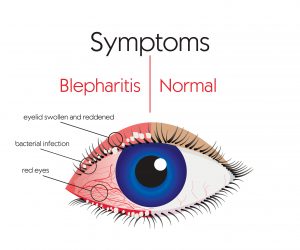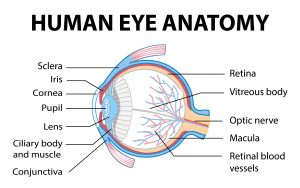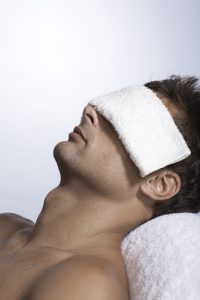Many people struggle with dry, irritated eyes from time to time. But when your eyes frequently feel dry, gritty, and inflamed, it may be due to dry eye syndrome.
It may also be due to a condition often associated with dry eye syndrome called blepharitis. Blepharitis is a common condition that can cause minor irritation.
But when left untreated, this eye disorder can cause significant eye health problems and even vision loss. It’s essential to see your eye doctor at Sierra Nevada Eye Center if you experience dry eye or blepharitis symptoms so you can receive prompt treatment.
To do this, you need to know what blepharitis symptoms look like, as well as how it can damage your vision. Keep reading to learn more about blepharitis!
What is Blepharitis?

Blepharitis occurs when the eyelid margins become inflamed. Suffering from this form of inflammation can lead to eye infections, styes, chronic inflammation, and general feelings of discomfort.
The source of the inflammation may be different from case to case, but the symptoms are all essentially the same, no matter what the cause is.
There are two kinds of blepharitis: anterior and posterior blepharitis.
Anterior Blepharitis
Anterior blepharitis occurs when the outer part of the eyelid near the eyelashes becomes inflamed. In many cases, this will usually be due to a bacterial eye infection, which can happen for numerous reasons.
If you have dry eyes or even dry eye syndrome, your eyes are more prone to infection, making it easier to develop anterior blepharitis. With anterior blepharitis, you may experience crusting around the edges of the eyelids.
Posterior Blepharitis
Posterior blepharitis develops when the inside of the eyelids becomes inflamed. Typically, it’s caused by inflammation of the meibomian glands.
The meibomian glands are the glands that produce the oil that coats your tears. A common cause of dry eye syndrome is meibomian gland dysfunction, which happens when the glands become clogged.
If these glands become blocked, it can also make them inflamed. Due to this inflammation, posterior blepharitis often accompanies dry eye syndrome.
Symptoms of Blepharitis

Both anterior and posterior blepharitis have similar symptoms. These symptoms include:
- Watery eyes
- Red eyes
- Experiencing a feeling like your eyes are gritty
- Feeling like your eyes are burning
- Swollen eyelids
- Greasy eyelids
- Crustiness or dry skin around the eyes
- Light sensitivity
- Frequent blinking to improve blurry vision
Many of these symptoms are also symptoms of having dry eye syndrome. If you experience these symptoms, see your eye doctor as soon as possible.
Even if you only have dry eye syndrome and not blepharitis, it’s necessary to start treatment. Leaving dry eye syndrome untreated can lead to developing blepharitis or other concerning complications.
Ocular Surface Disease
If you have ocular surface disease, it’s almost always due to dry eye syndrome, blepharitis, or a combination of both conditions. When your eyes are too dry, and your eyelids are inflamed, it causes damage to the exterior of your eye.
The longer the inflammation lasts, the more damage that can occur. Your cornea is the clear part of your eye located at the front.

It’s covered by two thin protective layers. These include the conjunctiva, which lines the inside of your eyelids, and the epithelium, which is the outermost layer.
When the epithelium becomes damaged, it exposes the conjunctiva underneath it. Exposing the conjunctiva can damage it and may result in exposure to the cornea.
When the cornea is exposed, it can experience abrasions and become infected, causing permanent scarring. This permanent scarring can cause irreversible visual problems.
Having ocular surface disease can be very serious. The good news is that it’s also preventable.
Because it’s caused by dry eye or blepharitis, the best way to prevent it is by treating dry eye and blepharitis before any damage can occur.
How Do You Treat Blepharitis?
If you have blepharitis, treatment options may vary depending on the patient and your needs. Proper eye care at home can help ease inflammation.

Treating Blepharitis at Home
Treating blepharitis at home may include using a warm compress on your eyes several times a day, daily eye cleaning, prescription ointments, eye drops, and other options.
It’s important to go to an eye doctor for a diagnosis before attempting to clean your eyes yourself, as you need to do it carefully. An eye doctor should oversee even the simplest home remedies for blepharitis so you care for your eyes correctly and use the proper cleaning techniques and solutions.
If you have blepharitis, your eye doctor will go over how to clean your eyes at home safely. As there are so many ways to treat blepharitis, your eye doctor may recommend a combination of treatments for the best results.
Treating Blepharitis with Prescription Medications
When home treatment isn’t effective on its own, or you have incredibly inflamed eyelids, your eye doctor may prescribe medication. For anterior blepharitis, antibiotics can treat the potential bacterial infection.
If you have posterior blepharitis, other medications, including steroids, may help effectively calm inflammation in the meibomian glands. You can administer medication both orally and topically. There are different kinds of ointments for topical treatments available.
Get Diagnosed with Blepharitis to Start Treatment
If you think you may have blepharitis, the first step is to receive a diagnosis. You cannot start treatment until you’re diagnosed with this eye condition.
If you have any visual issues or eye discomfort that doesn’t go away, you should see your eye doctor. Sometimes, the problem may be minor, even if it is blepharitis.
But you should receive treatment for even a minor case of blepharitis because it can become more severe if it’s left untreated. Receiving treatment is the only way to avoid worse complications later on.
Proper treatment and care may spare you from further discomfort and may even save your vision.
Are you tired of living with watery, red eyes that feel inflamed? Learn more about blepharitis by scheduling an appointment at Sierra Nevada Eye Center in Reno, NV!
You deserve to live without having inflamed eyes, so why not take the first step towards healthier eyes?


